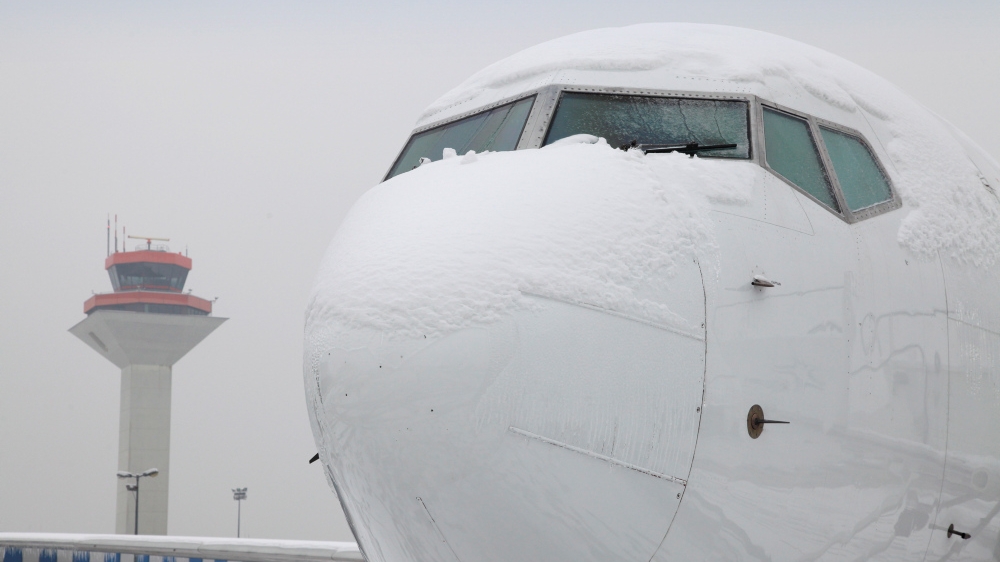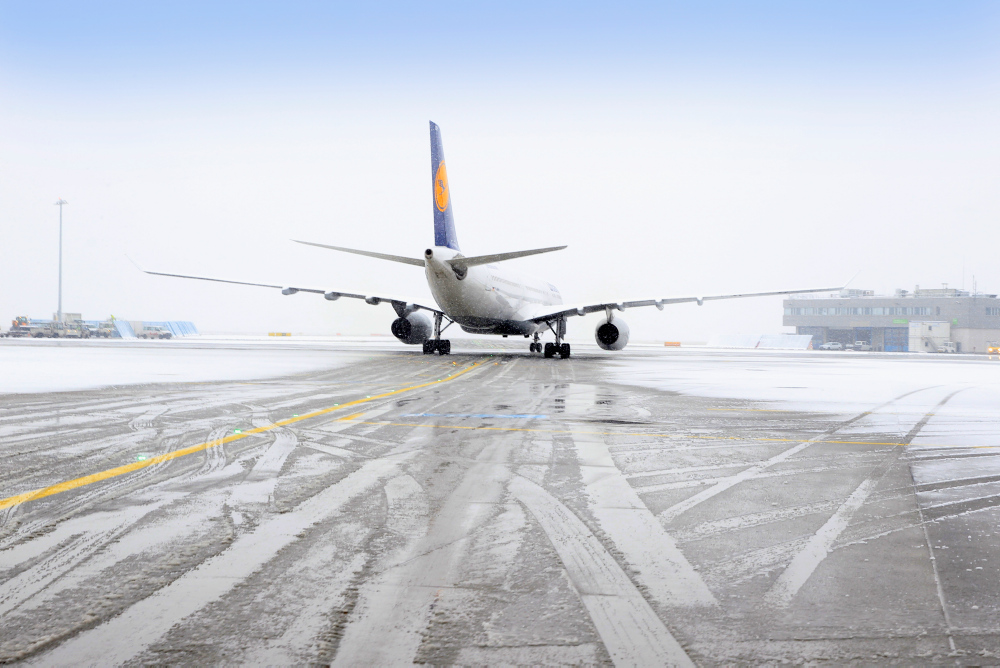De-Icing
Before an aircraft can take off, it has to get cleared of snow and ice to ensure safe flight characteristics. A mixture of de-icing fluid and water is used to remove contamination. During winter precipitation a protective layer (anti-icing) is applied afterwards to prevent further adhesion of snow and ice. The de-icing is done with special equipment and with trained and qualified personnel at the gate position or the designated remote de-icing pads.
Fluid
In Frankfurt, we use two different types of fluids that differ in their composition of glycol and water, the addition of thickeners and thus their attributes. Our de-icing fluid type I contains 80% glycol, no thickeners and is a thin liquid. It is suitable for de-icing but only offers a limited protection against refreezing. Type I always has to be mixed with water, the mixture is produced proportional to the outside air-temperature. Our de-icing fluid type IV contains 50% glycol and the addition of thickeners improves the adhesion to the aircraft surfaces. That way, winter precipitation can be absorbed and liquified, that results in a better holdover time. The fluid can be applied – depending on the required protective effect – in predefined dilutions (50% or 75%) or pure. The decision which fluid is used happens situationally, depending on the weather situation, contamination or the location of the de-icing.


Step 1
The decision if an aircraft depends on the pilot. There are two possibilites for the deicing request: Either the pilot contacts us during the planned off-block-time via the datalink in the cockpit or informs us about the de-icing requirement over the flight radio frequency 121.985 MHz.
After the inquiry we create an order in the Aircraft De-icing Center (ADC) and inform the pilot about the estimated de-icing time. The de-icing process will be done either at the current position of the aircraft or at one of the Remote Deicing Pads.
At the planned time the N*ICE team arrives at the cleared position with the de-icing vehicles (position de-icing) or an airplane can taxi to the special de-icing position located near the departure runway (remote de-icing).

Step 2
At the planned time, N*ICE is ready on the de-icing position
For the de-icing, we deploy our vehicles with NAD-technology that meet all the requirements for a fast and sustainable de-icing and are also predestined for the usage of large aircrafts e.g. the A380.
Existing signs of ice will be removed with the special de-icing fluid. Additionally, we apply a "protective layer", which prevent refreezing of the aircraft surfaces, if requried. The de-icing procedure takes approximately 10-15min.

Step 3
After the completion of the de-icing process, the ICEMAN transmits the "Anti-Icing Code" to the cockpit.
The aircraft is now ready to taxi to the runway, whether it has been de-iced at the parking position or on one of our de-icing pads.
The "Anti-Icing Code" informs the flight crew about the required concentration and type of de-icing fluid used, as well as start time of Anti-icing. The code confirms that the aircraft is free of snow and ice.
Pre-Deicing
For carriers with over-night-stands at Frankfurt Airport, N*ICE offers the so-called Pre-Deicing Service:
In case of weather conditions likely leading to the necessity of aircraft de-icing, N*ICE operates the de-/anti-icing before any other ground handling activities around the aircraft begin.
To request the pre-deicing service, the conclusion of a contract is required. Please contact us for further information.